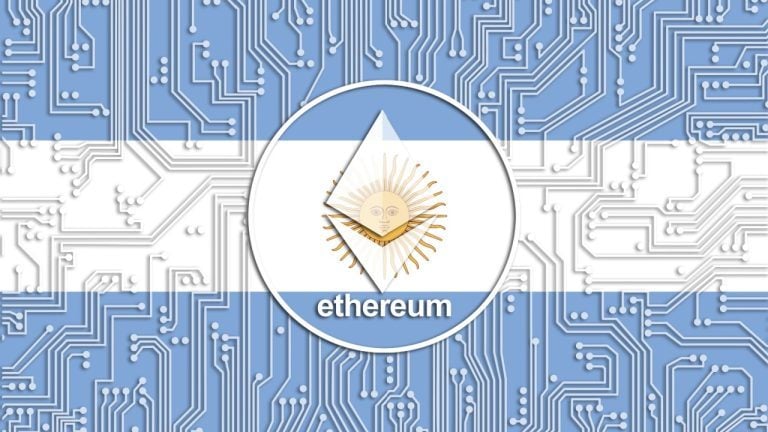
Alvaro Fernandez, the Chief Operations Officer (COO) at Lumoz, has stated that while zero-knowledge rollups have demonstrated exceptional security and scalability, the technology is still not user-friendly. To address this issue, networks should opt for ZK Rollups-as-a-Service (ZK-RaaS) because this simplifies the creation process for a single ZK-Rollup. This makes them “more accessible for developers and projects to use,” Fernandez added.
Zero-Knowledge Versus Optimistic Rollups
In his written answers sent to Bitcoin.com News via Telegram, Fernandez argued that by offering what he called “a seamless experience” ZK-RaaS can also quicken the “implementation of secure and scalable networks.” While ZK-RaaS are believed to be more secure, Optimistic Rollups-as-a-Service, on the other hand, are favored for their simplicity and cost-effectiveness.
Regarding industry sectors most suited for ZK-RaaS, the Lumoz COO identified decentralized finance (defi), gaming platforms, and non-fungible token (NFT) marketplaces. In decentralized finance, ZK-RaaS mitigates challenges relating to traditional platforms’ “high fees and sluggish transaction speeds.” By using ZK-RaaS, gaming platforms and NFT marketplaces can reduce transaction costs and increase transaction speed, while ensuring the security and privacy of their users’ data.
Below are Alvaro Fernandez‘s answers to all the questions sent to him.
Bitcoin.com News (BCN): Zero-knowledge (ZK) rollups have proven to be especially effective in creating secure and scalable networks yet the technology is seemingly not user-friendly. Can you tell our readers what these zero-knowledge rollups or ZK-RaaS are all about and why they are considered to be critical for scalability?
Alvaro Fernandez (AF): Absolutely, while ZK-Rollups have demonstrated exceptional security and scalability, their user-friendliness has been a challenge. ZK-RaaS addresses this concern by providing a user-friendly platform that abstracts the complexities of ZK Rollup technology.
ZK-RaaS simplifies the creation process of a single ZK-Rollup, making it more accessible for developers and projects to use. As what Lumoz provide, It’s a total no-code process, even ordinary people can use the ZK-RaaS launch base to generate their own ZK Rollup in minutes with bridges and explorers. One of the biggest challenges for most of the ZK projects is the prover cost, usually it’s the main cost of running a ZKRollup and its project needs to spend much effort and time maintaining the machines. Lumoz proposed this decentralized prover network that takes care of all the computing power stuff, which is free to projects.
This approach is critical for scalability because it lowers the entry barrier, encouraging a broader adoption of ZK Rollup technology. By offering a seamless experience, ZK-RaaS accelerates the implementation of secure and scalable networks.
BCN: There are two types of Rollups-as-a-Service — Optimistic Rollups and ZK-Rollups that are widely adopted by blockchain projects. What’s the difference between them and what are the pros and cons of each?
AF: Optimistic Rollups and ZK-Rollups are key Rollups-as-a-Service in blockchain. Optimistic Rollups assume transaction validity unless disputed, offering flexibility and cost-effectiveness. However, the arbitration process may introduce delays. ZK-Rollups use Zero-Knowledge Proofs for private transaction verification, excelling in privacy and security with faster finality. Yet, they may have higher setup costs due to computational needs. The choice hinges on project priorities: Optimistic Rollups for simplicity and cost-effectiveness, ZK-Rollups for heightened privacy and security.
BCN: Your company Lumoz uses a hybrid Proof-of-Work/Proof-of-Stake network to facilitate ZK-proof mining and enable developers to generate a customized zero-knowledge EVM chain. Could you tell us how this hybrid model works and why it’s needed in the first place?
AF: While proof of stake is primarily associated with the DA aspect, various DA providers like Celestia, Avail, Radius, and Espresso populate the market. Projects are encouraged to freely choose any for seamless integration including Lumoz DA.
However, proof of work stands out as a core strength and a distinctive advantage of Lumoz. As mentioned earlier, the generation of zkps in all zk-rollups necessitates computing power. Thanks to our decentralized prover network, miners can contribute their computing power, participate in zkp generation, and earn rewards through the POW process. Leveraging Lumoz’s extensive experience in mining, we’ve crafted this prover network to reduce barriers for projects seeking to adopt zk technology, while also facilitating miners to make valuable contributions and receive rewards.
BCN: With more and more people entering the Web3 space, why do you think decentralized applications (dapps) deployed on legacy Layer-1 chains and Layer-2 solutions need to consider using ZK-RaaS?
AF: Ethereum L1 is too congested, which is why Vitalik proposed the need for L2 to reduce transaction fees and increase TPS, improving the overall user experience. The differences between ZK and OP have been mentioned earlier, with ZK being more secure. Lumoz’s zk-raas addresses the issues of ZK computation power and deployment, enabling everyone to easily create customized zk-rollups.
The advantages of having one’s zk-rollup are evident — all on-chain resources serve the project, avoiding contention. This results in high TPS, low transaction fees, and an excellent user experience.
BCN: How does cross-rollup interoperability work with ZK-RaaS? Can you talk about Lumoz’s Native Cross Rollup Communication (NCRC) protocol that claims to provide a trustless solution for rollup interoperability?
AF: Cross-rollup interoperability is crucial in the ZK-RaaS framework, and Lumoz’s NCRC protocol ensures a seamless and trustless solution. This allows direct communication between ZK-Rollup chains, fostering a decentralized and secure environment without intermediaries. NCRC 2.0 enhances this by enabling cross-contract calls between second-layer networks, facilitating atomic cross-rollup contract calls.
Lumoz prioritizes user experience by integrating the first-layer network seamlessly, ensuring asset concentration without compromising decentralization. The NCRC protocol, especially in its latest version, exemplifies Lumoz’s commitment to achieving trustless cross-rollup interoperability, addressing challenges, and enhancing the blockchain ecosystem’s connectivity.
BCN: What industry segments are the most likely to benefit from ZK-RaaS? And how useful could it be for the Web2 companies that want to build their custom appchains?
AF: ZK-RaaS showcases its broad applicability across diverse industry segments, extending its benefits beyond the blockchain realm. In the financial and decentralized finance sectors, ZK-RaaS has the potential to transform transactions by ensuring security and scalability, mitigating challenges related to high fees and sluggish transaction speeds on traditional platforms.
Gaming platforms and NFT marketplaces can leverage ZK-RaaS for scalable and cost-effective transactions involving in-game assets and unique digital assets represented as NFTs. Additionally, in identity management, ZK-RaaS can play a crucial role in authenticating users without exposing sensitive information, making it valuable for industries requiring robust identity solutions.
As Web2 companies venture into building custom Appchains, ZK-RaaS emerges as a multifaceted solution, offering scalability, privacy preservation, customization, cost-effectiveness, and interoperability. This comprehensive set of features positions ZK-RaaS as a versatile choice for enhancing capabilities and meeting diverse needs in the evolving digital landscape.
What are your thoughts on this interview? Let us know what you think in the comments section below.
Bitcoin News








Leave a Reply
You must be logged in to post a comment.